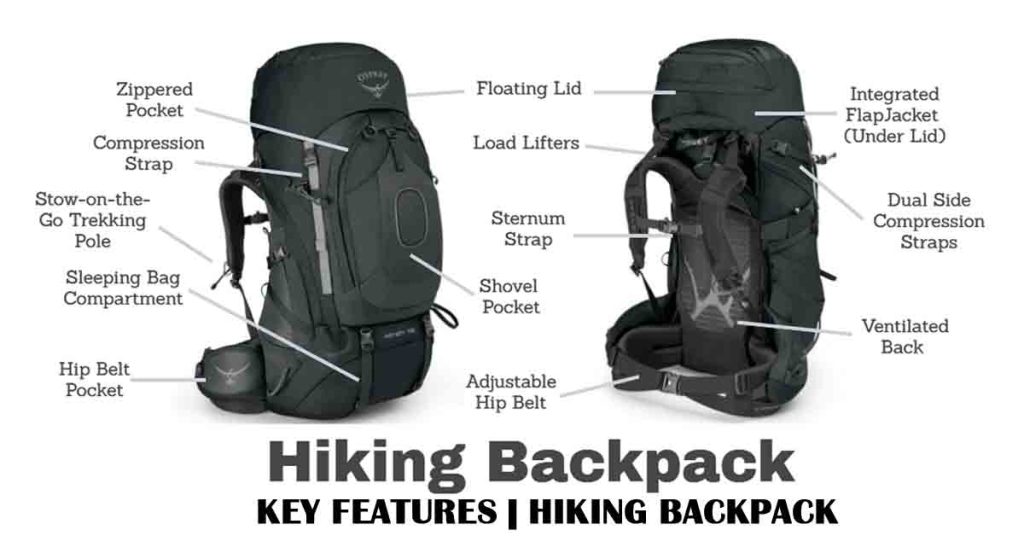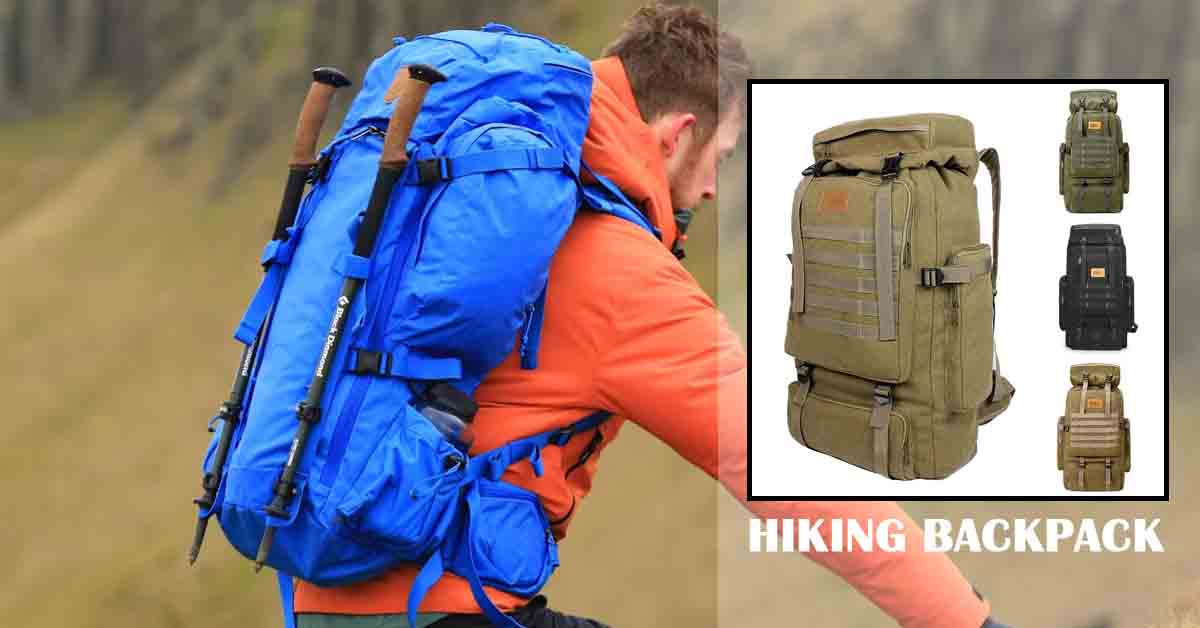1. Introduction: Why the Right Hiking Backpack Matters
Whether you’re planning a short nature walk or a multi-day trek, selecting the right hiking backpack is essential. A properly chosen pack will enhance your outdoor experience by reducing strain and helping you stay organized. This guide will walk you through capacities, features, materials, and top recommendations to help you find the perfect match.
2. Understanding Hiking Backpack Capacities
The first step in choosing a hiking backpack is understanding how much capacity you need:
- Daypacks (15–30 liters): Ideal for short hikes with minimal gear, like a water bottle, snacks, and a jacket.
- Overnight packs (30–50 liters): Suitable for weekend hikes where you’ll need space for extra clothing, food, and sleeping gear.
- Multi-day packs (50–70 liters): Best for longer adventures, allowing you to carry tents, cooking equipment, and more.
- Expedition packs (70+ liters): Designed for extended journeys or winter hikes requiring bulky gear.
Choosing the right capacity ensures you carry what you need without overpacking.
3. Key Features to Look for in a Hiking Backpack

A good hiking backpack should offer both comfort and convenience. Look for these essential features:
- Adjustable torso length and padded hip belts: Ensure a custom fit that distributes weight evenly across your body.
- Ventilation systems: Mesh back panels or suspended designs help keep you cool on long hikes.
- Hydration compatibility: Internal sleeves for hydration reservoirs allow hands-free drinking.
- Multiple compartments: Front pockets, sleeping bag compartments, and side pouches improve organization.
- External attachments: Loops for trekking poles, ice axes, or sleeping mats increase versatility.
Pay attention to design and adjustability to ensure the pack suits your hiking style.
4. Material and Durability Considerations
Durability is key when investing in a hiking backpack. Common materials include:
- Nylon and polyester: Lightweight and tear resistant, with options like ripstop fabrics for added strength.
- Water-resistant coatings: Many packs feature DWR (Durable Water Repellent) treatments to withstand light rain.
- Sturdy zippers and reinforced stitching: Critical for handling heavy loads and rugged trails.
While waterproof backpacks exist, most are water-resistant and work best when paired with rain covers.
5. Weight and Load Distribution
The weight of your hiking backpack matters, especially on long treks. Look for lightweight models that don’t compromise on durability. Features like padded shoulder straps, load lifters, and sternum straps can help distribute weight evenly.
Packing smartly also improves comfort keep heavier items centered and close to your back. Avoid overloading your pack to minimize fatigue and reduce the risk of injury.
6. Top Hiking Backpack Brands and Models
Here are some top-rated hiking backpack brands known for comfort and quality:
- Osprey: Offers highly adjustable packs like the Atmos AG and the women’s specific Aura AG, known for their Anti Gravity suspension.
- Deuter: Renowned for their Aircomfort back systems and robust construction.
- Gregory: Produces ergonomic designs with great weight distribution, such as the Baltoro and Deva series.
Budget-conscious hikers can also find quality in brands like Teton Sports or REI Co-op.
7. Environmental and Ethical Considerations
Sustainability is becoming a priority in outdoor gear. Many hiking backpack manufacturers are embracing eco friendly practices:
- Recycled materials: Some models use post-consumer waste fabrics.
- Bluesign® certification: Ensures minimal environmental impact during production.
- Long-lasting design: Buying durable, repairable gear reduces landfill waste over time.
Choosing responsibly-made gear supports the environment you love to explore.
8. FAQs: Common Questions About Hiking Backpacks
What size hiking backpack do I need?
It depends on trip length and gear requirements. For day hikes, 20–30L is often enough. Multi day trips typically require 50L or more.
How should a hiking backpack fit?
It should rest comfortably on your hips with shoulder straps adjusted to your torso length. The majority of weight should be carried on your hips.
What’s the difference between internal and external frame backpacks?
Internal frame packs hug the body and are better for stability and comfort. External frames offer better airflow and are ideal for carrying bulky loads.
Can I use a hiking backpack for travel?
Yes, many models are versatile enough for travel. Look for features like lockable zippers and detachable daypacks.
How do I clean and maintain a hiking backpack?
Clean with mild soap and water. Avoid washing machines. Store in a dry place and check seams and zippers regularly.
